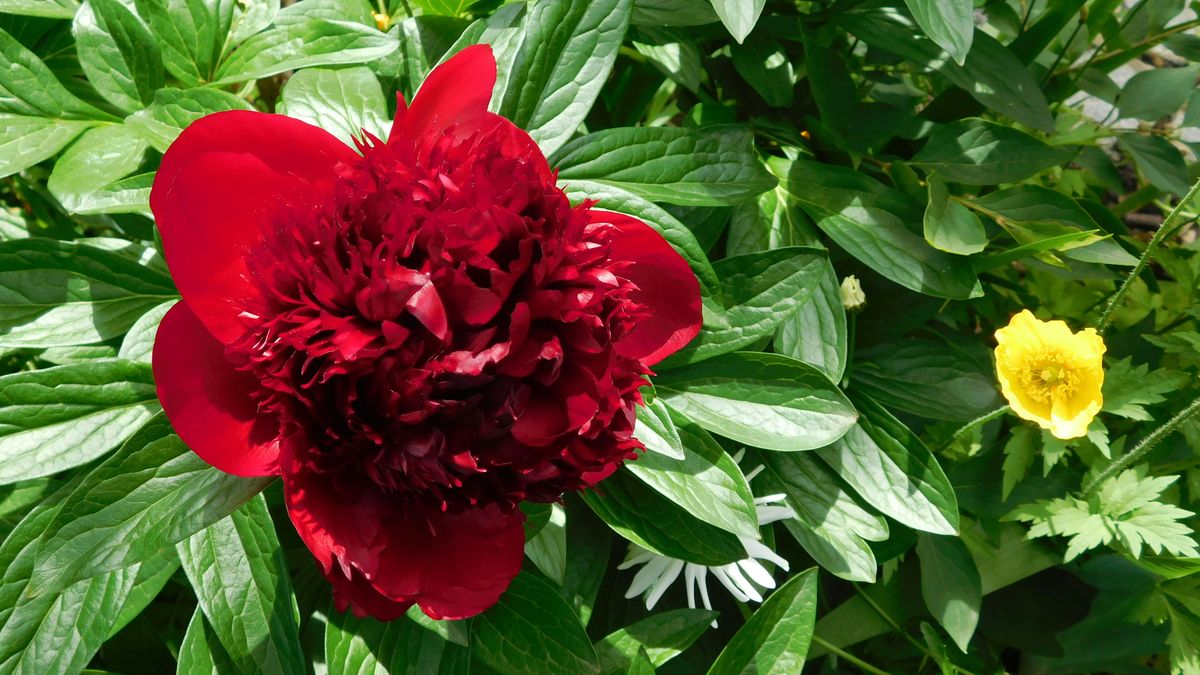Variegated ginger plants are a popular choice for tropical landscaping due to their vibrant colors, lush foliage, and low maintenance charm. In this article, we will explore why variegated ginger stands out in tropical gardens, provide tips for incorporating these plants in your landscape, and discuss how to care for them.
Key Takeaways
- Variegated ginger plants add vibrant colors to tropical gardens.
- The lush foliage of variegated ginger creates a lush and tropical feel in the landscape.
- Variegated ginger plants are low maintenance and easy to care for.
- Choose the right location with partial shade for variegated ginger plants.
- Pair variegated ginger with other tropical plants for a cohesive and visually appealing landscape design.
Why Variegated Ginger Stands Out in Tropical Gardens

The Vibrant Colors
The allure of variegated ginger in a tropical setting is undeniable, with its kaleidoscope of hues that catch the eye and enliven the landscape. Each leaf is a masterpiece, with patterns that seem to have been painted by nature’s own brush. The Variegated Shell Ginger, in particular, is a visual triumph, flaunting leaves that are a tapestry of green and yellow, creating a striking contrast that can brighten any corner of your garden.
When planning your garden’s color palette, variegated ginger offers a unique advantage. It pairs well with both bold and subtle hues, making it a versatile choice for gardeners. Here’s a quick list of color pairings that work exceptionally well with variegated ginger:
- Deep purples or blues to accentuate the yellow tones
- Bright oranges or reds for a tropical burst of color
- Soft whites or pinks for a more subdued, elegant look
Remember, the key to a visually appealing garden is balance. Variegated ginger can serve as a focal point or as a complement to other plants, depending on how you design your space. Its vibrant colors are not just a feast for the eyes but also a practical choice for those seeking low-maintenance beauty.
Lush Foliage
The variegated ginger, with its lush foliage, is a true spectacle in any tropical garden. Each leaf is a work of art, with patterns that seem to dance in the dappled sunlight. The leaves aren’t just pretty; they’re also robust, creating a dense canopy that can fill any garden space with vibrant greenery.
Here’s what makes the foliage of variegated ginger so special:
- Varied patterns: No two leaves are the same, giving your garden a dynamic and eclectic look.
- Year-round beauty: Unlike flowers that bloom seasonally, the foliage provides constant visual interest.
- Shade tolerance: These plants thrive even in the shadier parts of your garden, making them versatile and easy to incorporate.
Whether you’re looking to create a lush undergrowth or a standalone feature, variegated ginger’s foliage is a reliable and attractive choice. It’s the kind of plant that invites you to take a closer look, to appreciate the intricate details that make tropical landscaping so enchanting.
Low Maintenance Charm
One of the most endearing qualities of variegated ginger is its low maintenance nature, making it a favorite among both novice and seasoned gardeners. Unlike some high-maintenance tropical plants, variegated ginger doesn’t demand constant attention. It’s a set-and-forget type of plant that rewards you with vibrant aesthetics with minimal effort.
Here’s a quick rundown of what makes variegated ginger so easy to care for:
- Drought tolerance: Once established, these plants can handle short dry spells.
- Pest resistance: They are less prone to pests, reducing the need for chemical treatments.
- Adaptability: Variegated ginger adapts well to a variety of soil types.
Incorporating variegated ginger into your garden not only enhances your landscaping but also provides a practical solution for areas where you want beauty without the fuss. It’s like having a piece of art that takes care of itself, allowing you more time to explore the beauty of your tropical paradise or to work on other projects, like that DIY rock downspout basin you’ve been thinking about.
Tips for Incorporating Variegated Ginger in Your Landscape

Choosing the Right Location
Picking the perfect spot for your variegated ginger is a game-changer. These tropical treasures thrive in warm, sheltered areas that mimic their natural habitat. You’ll want to aim for a location that gets partial shade, as too much direct sunlight can scorch their beautiful leaves, while too little can lead to lackluster growth.
Here’s a quick checklist to ensure you’re on the right track:
- Look for a spot with bright, indirect light.
- Ensure the area is protected from strong winds.
- Check that the soil drains well to avoid waterlogged roots.
Remember, ginger plants are quite the water enthusiasts, so once you’ve nestled them into their new home, give them a good drink to settle in. This initial watering is crucial for establishing a strong root system, setting the stage for a lush, vibrant display.
Complementing Plant Pairings
When it comes to creating a tropical tapestry in your garden, the variegated ginger can play a starring role. But what about its supporting cast? Choosing companion plants that complement the ginger’s striking leaves and growth habit is key to a harmonious design.
Here’s a quick list of plant pairings that work wonders with variegated ginger:
- Ornamental kales for a contrasting texture
- Trailing pansies to add a splash of color at the base
- ‘Angyo Star’ fatshedera, a variegated ivy, for continuity in pattern
Remember, the goal is to expand your garden’s visual appeal by meeting the ginger’s vibrancy with equally engaging companions. Be open to experimenting with different combinations to find what creates the most meaningful connections in your landscape.
Designing with Variegated Ginger
When it comes to designing with variegated ginger, think of it as the artist’s brush adding strokes of color and texture to your garden canvas. This plant’s unique appearance can create focal points or soften edges with its lush, striped leaves. Here are a few design tips to get you started:
- Contrast and Complement: Pair variegated ginger with solid green plants like the adaptable Clusia hedges, which not only provide a backdrop to make the ginger’s colors pop but also offer privacy and aesthetics.
- Layering: Place taller plants behind and shorter ones in front to create a multi-dimensional effect. Remember, variegated ginger can grow quite tall, so factor in its growth habits.
- Repetition: Use variegated ginger throughout your landscape to create rhythm and cohesion. This repetition can guide the eye and tie different garden areas together.
By considering these elements, you’ll ensure that your variegated ginger not only thrives but also enhances the overall beauty of your tropical landscape. And don’t forget, while they are a standout feature, these plants are also known for being low maintenance, which means more time to enjoy your garden paradise.
Caring for Your Variegated Ginger Plants

Watering Needs
Keeping your variegated ginger hydrated is a balancing act. Too much water can lead to root rot, while too little can cause the leaves to wilt and lose their vibrant hues. A good rule of thumb is to water when the top inch of soil feels dry to the touch. Here’s a quick guide to help you get it just right:
- Water deeply but infrequently to encourage strong root growth.
- During hot, dry periods, increase watering frequency to prevent stress.
- Reduce watering in the cooler months to match the plant’s slower growth rate.
Remember, variegated ginger is somewhat drought-tolerant once established, so it’s better to err on the side of underwatering rather than overwatering. If you’re unsure, check the soil moisture with your finger or a small stick. And just like you’d prevent clogs in your kitchen sink with a debris catcher, make sure the drainage around your ginger plants is clear to avoid waterlogging.
Fertilizing Tips
Feeding your variegated ginger is like giving it a little pep talk – it doesn’t need much, but it sure does appreciate the encouragement. A balanced organic fertilizer is your go-to choice for these tropical beauties. They’re not heavy feeders, so a light application in the spring and maybe a little top-up in the summer will do the trick.
Here’s a quick rundown on how to fertilize your ginger plants:
- Start in the spring as the new growth appears.
- Apply a balanced fertilizer, following the instructions on the package.
- Consider a second application in mid-summer if the plant looks like it could use another boost.
Remember, over-fertilizing can be just as harmful as not fertilizing at all. So, keep it light and your ginger will reward you with its stunning variegated leaves and vibrant presence in your garden.
Pruning Techniques
Getting the pruning right for your variegated ginger is like giving it a new lease on life. Prune late winter or early spring to give your plants the best chance at healing and thriving in the growing season. It’s not just about cutting back; selective pruning can really enhance the plant’s shape and bring out the vibrant variegation. Aim for symmetry to keep your ginger looking its best.
When you’re ready to start snipping, make sure your tools are up to the task. Always begin with clean blades on your pruning shears or loppers to prevent disease spread. For the younger canes, a pair of short, handheld pruners might do the trick, but you’ll need something heftier for the older, tougher canes. And don’t forget the post-prune care! A little extra attention after trimming can go a long way.
Here’s a quick checklist to keep in mind when pruning your variegated ginger:
- Clean and sharpen your tools before starting.
- Prune for symmetry and to enhance variegation.
- Use the right tool for the cane’s age and thickness.
- Follow up with proper care to support recovery.
Frequently Asked Questions
Can Variegated Ginger Survive in Cold Climates?
Variegated ginger is sensitive to cold temperatures and may not survive in areas with frequent frost. It is best suited for tropical or subtropical climates.
How Often Should Variegated Ginger Plants be Watered?
Variegated ginger plants prefer consistently moist soil. Water them regularly, especially during hot and dry periods, but avoid overwatering to prevent root rot.
Do Variegated Ginger Plants Attract Pests?
Variegated ginger plants are generally resistant to pests, but they may attract aphids or spider mites in certain conditions. Regularly inspect the plants for any signs of infestation.
Can Variegated Ginger Plants be Grown Indoors?
Variegated ginger plants can be grown indoors as long as they receive sufficient light, warmth, and humidity. Place them near a bright window and provide adequate moisture for optimal growth.
How Tall do Variegated Ginger Plants Typically Grow?
Variegated ginger plants can reach heights of 3 to 6 feet, depending on the variety and growing conditions. Regular pruning can help control the plant’s height and shape.
Are Variegated Ginger Plants Toxic to Pets?
Variegated ginger plants are considered non-toxic to pets, but they may cause mild gastrointestinal discomfort if ingested. It is always best to keep pets away from the plants as a precaution.
